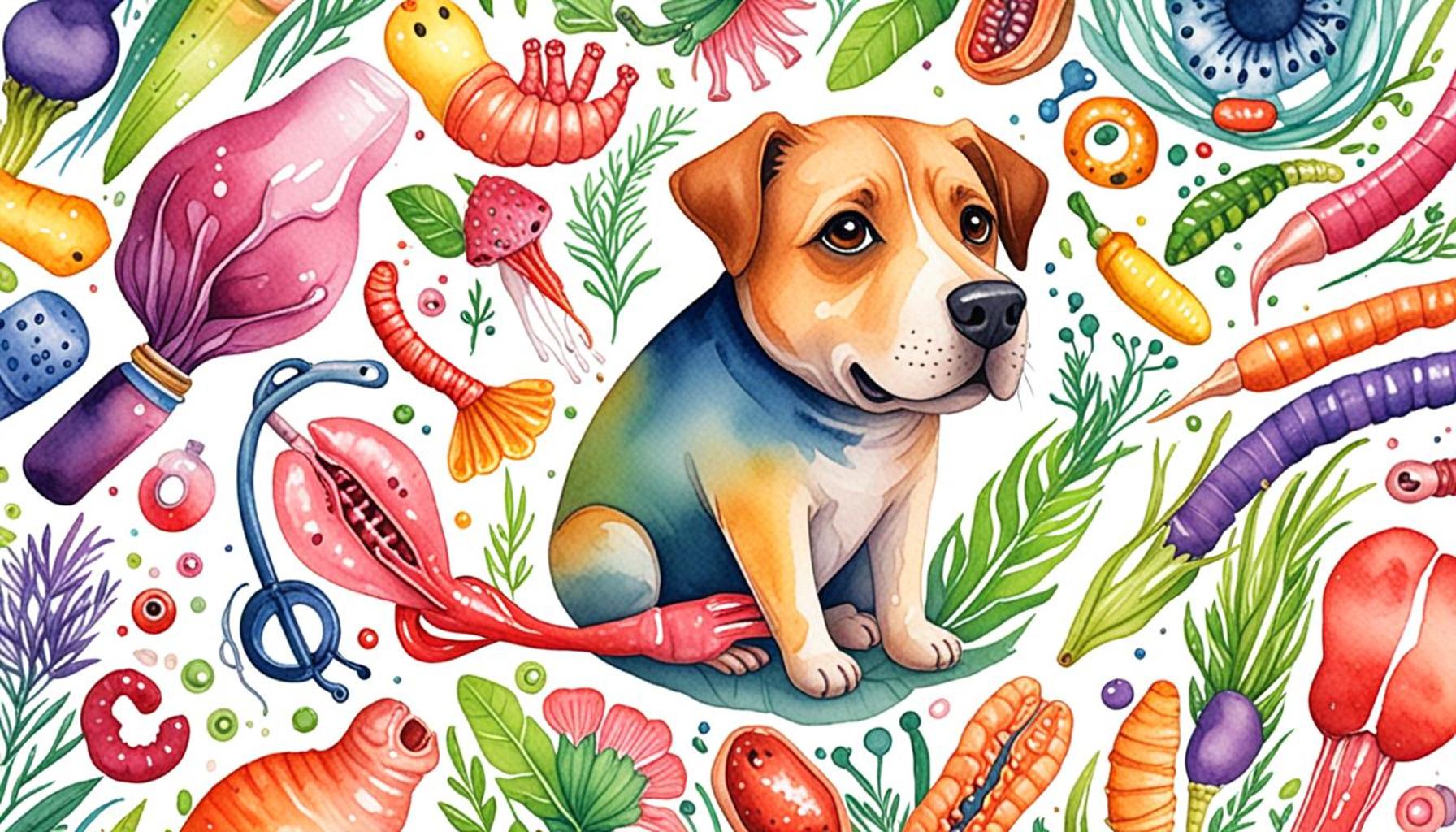The Benefits of Animal-Assisted Therapy for Physical and Emotional Health

Exploring the Transformative Power of Animals
In recent years, animal-assisted therapy (AAT) has gained significant attention as a compelling approach to enhance both physical and emotional health. Individuals of all ages are discovering the profound impact that interactions with animals can have on their well-being. But what exactly makes these furry companions so beneficial?
- Improves Mental Health: Studies suggest that therapy animals help reduce symptoms of anxiety and depression. The simple act of petting a dog or cat can release oxytocin, often referred to as the “love hormone,” which fosters feelings of relaxation and emotional connection.
- Enhances Physical Rehabilitation: Engaging with animals can motivate patients to improve their physical capabilities. For example, stroke patients who interact with therapy dogs often experience greater motivation to engage in rehabilitation exercises, leading to improved mobility and strength.
- Boosts Social Interaction: Animals often facilitate connections between people, promoting a sense of community. In group therapy settings, the presence of a pet can break down barriers and encourage communication, fostering friendships among participants.
For instance, programs utilizing service dogs for veterans suffering from PTSD have shown remarkable results. These specially trained dogs provide companionship and support, helping veterans to feel safer and more comfortable in their surroundings. Similarly, children with autism spectrum disorder often show improvements in social skills through interactions with therapy pets. These furry friends become a bridge for communication, allowing children to express emotions in a non-threatening environment.
Research indicates that animal-assisted therapy can be particularly effective across various demographics, whether in hospitals, schools, or rehabilitation centers. Elderly patients in nursing homes often report decreased feelings of loneliness when spending time with therapy animals, highlights the universal appeal of this therapeutic approach.
Scientific Backing and Anecdotal Evidence
The evidence supporting animal-assisted therapy continues to grow, bolstered by both scientific studies and personal testimonials. Data from numerous research initiatives reveal that the presence of animals can lower stress levels, improve mood, and even contribute to lower blood pressure. For instance, one study published in the Journal of Psychiatric Research found that participants who engaged in therapy with dogs exhibited significant decreases in anxiety levels compared to those who did not. Furthermore, anecdotal evidence from patients often emphasizes the emotional support and joy that therapy animals provide, creating lasting bonds that can positively influence mental health recovery.
As we continue to delve into the myriad ways that AAT can enhance life quality, the possibilities seem endless. Whether through structured programs or informal interactions, it is clear that these extraordinary relationships with animals can offer profound benefits, inviting everyone to explore their own potential for healing and connection.
Unpacking the Multifaceted Benefits of Animal-Assisted Therapy
Animal-assisted therapy (AAT) is not just a trend; it represents a profound shift in understanding how interactions with animals can significantly influence both physical and emotional health. The benefits of AAT span a wide range of mental health issues, rehabilitation processes, and social dynamics, making it a valuable tool in therapeutic contexts. Here, we will explore several key areas where therapy animals make a remarkable impact.
- Emotional Support and Stability: Engaging with therapy animals often results in heightened levels of emotional stability. Research shows that contact with animals can significantly reduce cortisol levels, a hormone associated with stress. Participants in therapy sessions report feelings of comfort and safety when interacting with animals, which can lead to increased emotional resilience.
- Improved Physical Health Outcomes: Beyond emotional benefits, AAT can also lead to tangible physical improvements. Individuals recovering from surgery or chronic illnesses often find that the motivation provided by therapy animals encourages them to participate in physical activity. For instance, elderly patients in rehabilitation programs may engage in exercises more willingly and with increased enthusiasm when a therapy dog is present.
- Creating Meaningful Connections: AAT uniquely fosters connections—not just between humans and animals but among individuals as well. Many patients report that therapy animals help spark conversations and networking opportunities, as the animals serve as a bridge between people who might otherwise remain isolated or withdrawn.
Furthermore, many hospitals and schools across the United States have begun incorporating AAT into their therapeutic programs with great success. For example, children with learning disabilities or behavioral challenges often respond positively to interactions with therapy dogs, displaying improved focus and a more enthusiastic attitude towards learning. The warmth and nonjudgmental nature of therapy animals can create a safe space for children to express their thoughts and feelings.
In the geriatric community, the presence of therapy animals has been linked to enhancing cognitive function. Regular sessions with therapy animals have demonstrated improvements in memory and cognitive performance among seniors in long-term care facilities. Case studies show that residents who regularly engage with animals are more alert and socially active, leading to a more fulfilling quality of life.
Addressing Specific Conditions through AAT
One of the most compelling aspects of animal-assisted therapy is its adaptability to address specific conditions. Therapy animals can significantly reduce symptoms associated with traumatic experiences, anxiety disorders, and depression. For instance, veterans suffering from post-traumatic stress disorder (PTSD) frequently find solace and companionship through specially trained service dogs, providing them an anchor in their recovery journey.
Additionally, children on the autism spectrum have shown remarkable improvements in communication skills and emotional regulation through structured interactions with therapy animals. Anecdotal evidence suggests that the non-threatening presence of animals encourages children to open up in ways they may not during traditional therapy sessions, transforming the route to effective communication.
The potential of AAT to offer holistic benefits is paving the way for more widespread integration into therapeutic practices, showcasing how our furry companions can serve as vital allies in the pursuit of health and healing.
The Advantages of Animal-Assisted Therapy
Animal-Assisted Therapy (AAT) has garnered attention for its profound influence on both physical and emotional health. Individuals of all ages can experience transformative benefits through interaction with therapy animals. Below, we explore some of the key advantages of this therapeutic approach, revealing why it is gaining traction in various health settings.
| Benefits of AAT | Key Features |
|---|---|
| Enhances Physical Recovery | AAT encourages physical movement and exercise, promoting mobilization and muscle strength among patients in recovery from injuries. |
| Reduces Anxiety | Interacting with animals has been shown to lower cortisol levels, helping individuals feel more relaxed and at ease in stressful situations. |
| Improves Social Interaction | Therapists often use animals to facilitate communication and social interaction among patients, especially those with autism or social anxiety. |
| Boosts Emotional Well-being | The unconditional affection provided by therapy animals can significantly enhance mood and overall emotional health. |
These advantages illustrate just a fraction of how Animal-Assisted Therapy might revolutionize health interventions. With increasing clinical applications, this form of therapy offers a refreshing and compassionate approach to enhancing patients’ physical and emotional well-being. To uncover more about its methodologies and research-backed outcomes, continue exploring the burgeoning field of AAT.
Enhancing Quality of Life: Diverse Applications of AAT
Animal-assisted therapy (AAT) is gaining traction not only in traditional mental health settings but also in various non-traditional areas, broadening its impact on physical and emotional health. Its versatility allows it to support individuals in different life stages—from children to the elderly—illustrating its ability to adapt to various therapeutic needs.
- Boosting Motivation in Rehabilitation: In physical rehabilitation settings, therapy animals provide a unique source of motivation for patients recovering from injuries or surgeries. The mere presence of a therapy dog during therapy sessions can encourage individuals to engage more fully in exercises, gaining the resilience they need to push through physical pain. Studies indicate that children undergoing physical therapy showed a significant increase in participation and enthusiasm when therapy animals were included in their sessions, resulting in faster recovery times.
- Combating Loneliness Among Seniors: The elderly population often faces feelings of loneliness and isolation, particularly in assisted living or nursing home environments. AAT can play a pivotal role in combating these feelings. Regular visits from therapy dogs have been observed to evoke smiles among residents, sparking emotional connections that reduce depressive symptoms. A study from the University of Missouri found that seniors who interacted with therapy animals exhibited lower blood pressure and heart rate, underscoring the physiological advantages of having animals in their vicinity.
- Improving Classroom Dynamics: In educational settings, AAT has demonstrated the capability to create more inclusive and effective learning environments. Students with learning disabilities or behavioral challenges often find solace in therapy animals. For instance, in classrooms where therapy dogs are present, teachers report lower levels of anxiety among students, leading to improved focus and academic performance. The animals also foster peer interactions, contributing to a collaborative learning atmosphere.
One remarkable example of AAT’s transformative power is seen in programs that pair therapy dogs with individuals diagnosed with Alzheimer’s disease. Research indicates that these interactions can trigger memories and spark communication, allowing caregivers a glimpse into their loved ones’ memories and personalities that might otherwise remain hidden. The soft touch of a dog can transcend words, providing comfort and sparking joy.
Furthermore, organizations across the country are now training therapy animals specifically for therapeutic settings, highlighting a greater understanding of AAT’s effectiveness. Notable programs include the Pet Partners and Therapy Dogs International, both of which certify therapy teams that engage with individuals in hospitals, schools, and mental health facilities. These collaborations not only enhance the quality of care but reaffirm the significance of tailored interventions in emotional and physical wellness.
Innovative Research and Evolving Perspectives
The shaping of AAT is also marked by evolving research that continues to validate its efficacy. A recent meta-analysis indicated that patients who underwent AAT demonstrated significant improvements in various psychological measures compared to those receiving only traditional therapy. As we delve deeper into understanding the neurobiological effects of human-animal interactions, particularly the release of oxytocin (often termed the ‘love hormone’), the therapeutic potential of AAT becomes increasingly evident.
Moreover, the inclusion of therapy animals in integrative medical practices—such as pain management units and palliative care—reflects a growing recognition of holistic approaches to health. Integrating AAT into such frameworks paves the way for comprehensive care models where emotional and physical health can be nurtured simultaneously, affirming the notion that recovery and well-being are best achieved through diverse and compassionate means.
Conclusion: Embracing the Healing Power of AAT
The evidence supporting animal-assisted therapy (AAT) as a valuable intervention for enhancing both physical and emotional health continues to grow. From the rehabilitation of injured patients to alleviating the loneliness of the elderly, the adaptability of AAT across various demographics illustrates its profound impact. As we’ve explored, therapy animals not only encourage motivation and engagement in therapeutic settings but also create lasting emotional connections, fostering improved well-being.
The innovative integration of AAT into fields such as education and palliative care highlights the necessity for holistic approaches in modern healthcare. It is essential to acknowledge that these programs are more than just feel-good initiatives; they are rooted in empirical research demonstrating their effectiveness. As highlighted by recent findings, AAT can lead to measurable improvements in emotional regulation, anxiety reduction, and overall quality of life.
As we move forward, it is vital for health professionals and caregivers to consider animal-assisted therapy as a mainstream component of treatment plans. By embracing the therapeutic potential of animal interactions, we can cultivate environments that prioritize compassion, understanding, and healing. The ongoing support from organizations dedicated to training therapy animals underscores a collective commitment to advancing AAT’s role in improving health outcomes.
In conclusion, the multifaceted benefits of AAT call for a broader appreciation and implementation in therapeutic practices. Each wag of a tail or gentle nuzzle carries the promise of transformation, inviting us to explore the depths of recovery and emotional health supported by our furry companions.


